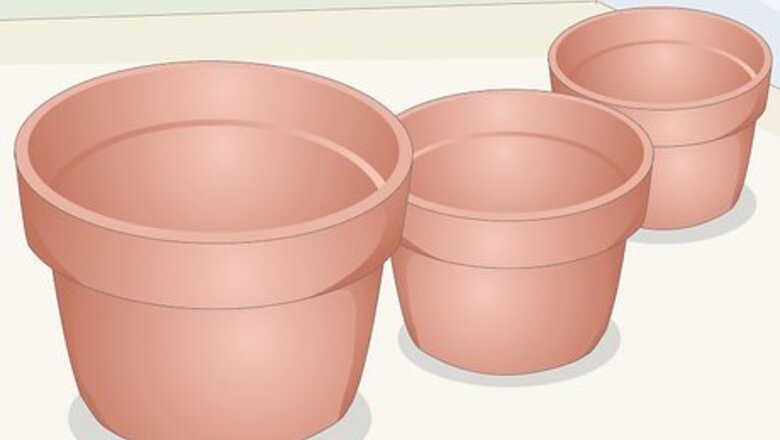
views
Constructing the Pieces

Collect 3 clay pots in nesting sizes. Purchase a 24 by 22 in (61 by 56 cm) pot, a 13 by 12 in (33 by 30 cm) pot, and a 12 by 10 in (30 by 25 cm) pot. Make sure the pots are all made out of clay. You can find clay pots at most garden supply stores.
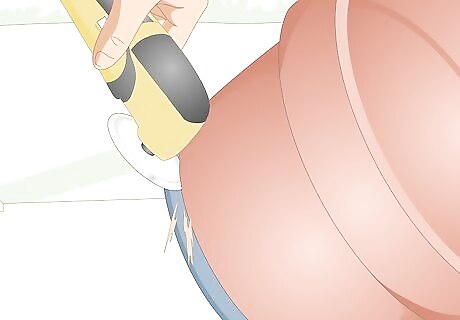
Remove the bottom of your medium pot with an angle grinder. Put a 1 inch (2.5 cm) wide piece of masking tape around the bottom of your medium-sized pot. Use an angle grinder to cut the bottom off of the pot following the top line of the tape. Set the bottom of the medium pot aside to use later.Warning: If you use a saw to cut your clay pot, it will ruin your saw. Use an angle grinder instead.
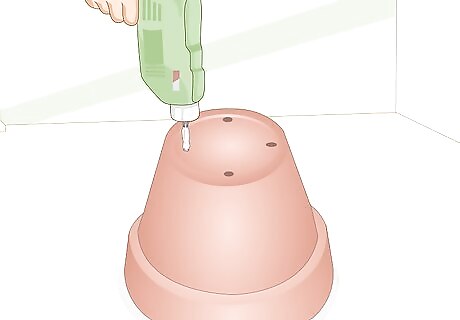
Drill 4 holes around the circumference of the bottom of the large pot. Flip the large pot over so that it is resting firmly on the ground. Use a drill bit that is strong enough to drill through concrete. Make 4 holes around the large hole that is already in your pot, leaving about 1 inch (2.5 cm) of space between the holes and the outer edge. Space them out so that they don’t connect and be sure that the bottom of your pot does not get compromised. You can also use a masonry drill bit to create the holes.
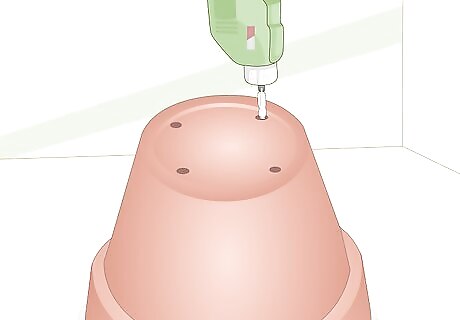
Create 4 holes around the circumference of the bottom of the small pot. Flip the smallest pot over so that it rests firmly on the ground. Use the same concrete drill bit to create 4 evenly spaced holes around the hole already in the pot. Leave about 0.5 inches (1.3 cm) between the holes and the outer edge of the pot.
Assembling the Oven
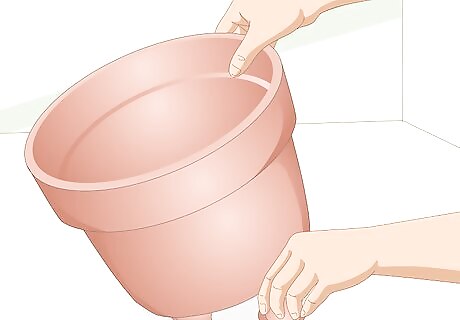
Place a few pieces of a broken brick underneath of the large pot. Smash a brick with a sledge hammer into 3 or 4 large pieces. Set these pieces on the ground where you’d like to put your Tandoor oven. Place your largest pot on top of the bricks, making sure that the hole at the bottom of the pot is not covered by any brick pieces. If you don’t have any old bricks, you can use a few flat rocks as long as they are all the same height. Set up your oven on brick or concrete so that you don’t burn your grass.
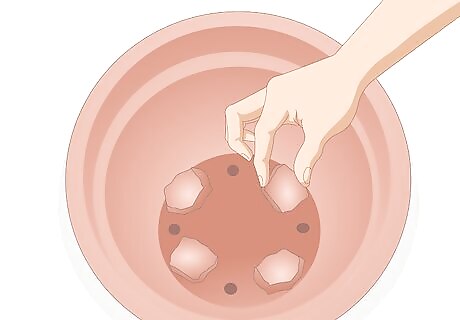
Place a few pieces of broken-up brick into the large pot. If you need to, smash another brick with a sledge hammer. Put 3 to 4 pieces in the bottom of the largest clay pot. Do not place any brick pieces on the hole in the middle of the pot.Tip: If you don’t have any more bricks, you can cut off the rim of the small pot with an angle grinder and use that instead. The hole in the middle of the pot allows airflow when the fire is going. If you cover it up, the fire will extinguish itself.
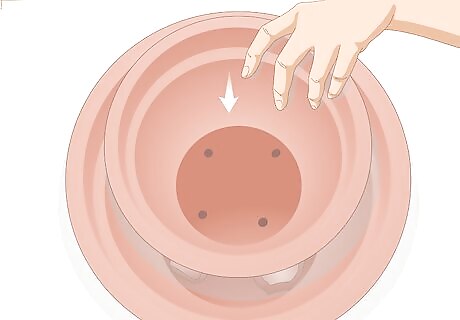
Put the smallest pot on top of the bricks inside of the large pot. Carefully place the smallest pot inside of the large pot. Line up the holes in each pot as well as you can. Make sure the small pot is balanced evenly on the bricks and it doesn’t wobble. Prevent the small pot from wobbling by making sure your bricks are laid with the flat side down.
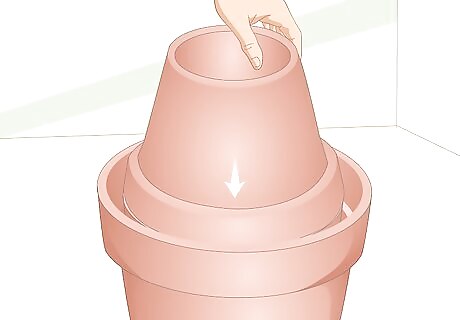
Turn the medium pot upside down and put it over the small pot. Place the medium pot snugly over the small pot so that the medium pot hugs the sides of the small pot. Make sure the medium pot is flat and doesn’t wobble around.
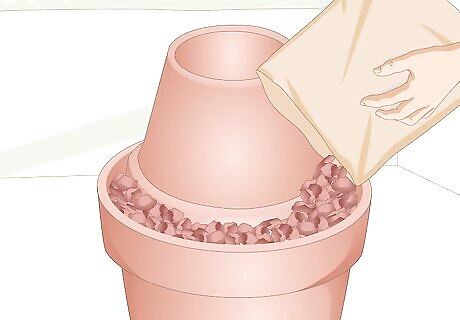
Fill the excess space with lava rocks or vermiculite. Pour a bag of whichever substance you choose into the excess space around the medium and small pot. Fill up your large pot to its brim with rocks. Make sure there is little airflow or excess space in between the rocks. You can purchase lava rocks or vermiculite at most garden supply stores. Vermiculite is a mineral that expands when it is heated. Lava rocks are larger, so you will need less of them to fill your space.
Using Your Oven
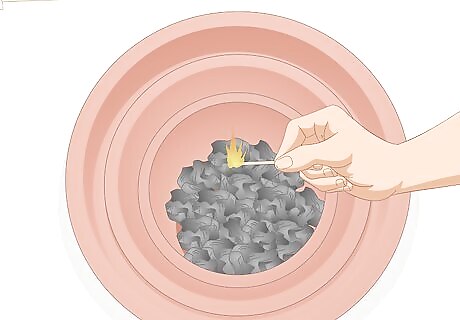
Light charcoal in the bottom of your small pot. Place a handful of charcoal at the very bottom of the small pot through the opening in the medium-sized pot. Use a match or a lighter to light your coals. Wait until the fire catches and burns for about 5 minutes to reach a high temperature. You can buy charcoal at most grocery stores.
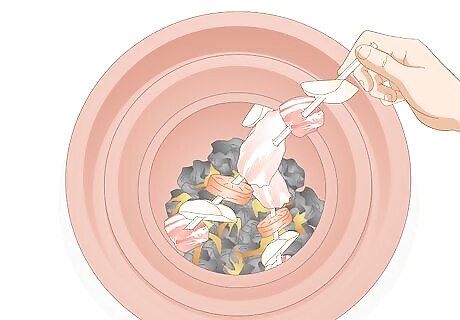
Put skewers of meat and vegetables inside of the medium pot. Tandoor ovens work very well on small pieces of meat that are broken up and put onto wooden or metal skewers. Leave about 1 inch (2.5 cm) at the end of your skewer empty. Place your skewers into your medium pot with the empty portion sticking into the coals. Traditionally, Tandoor ovens were used to cook chicken, beef, and lamb.

Place the bottom of the medium pot back onto itself. If you leave the Tandoor open, it becomes just like a grill. Place the bottom part of the medium pot back on top of itself to trap in the heat and smoke. Remove it once your food has cooked and enjoy your skewers!Tip: The bottom of the medium pot may be hot. Use a metal hook to catch the hole in the removable piece to take it off, or put on oven mitts before you touch it.
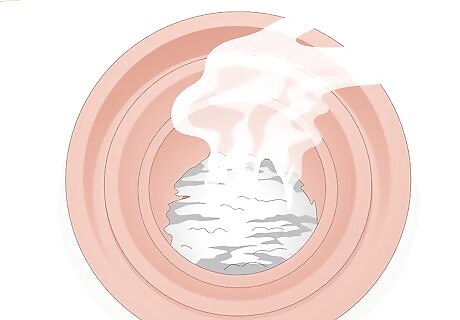
Let the charcoal burn until it is ash. After you are done cooking, allow your charcoal to burn itself out until it is no longer hot. Depending on the heat of your fire, this could take several hours. Do not leave your Tandoor oven unattended while the charcoal is still burning. Feel the sides of the large pot to tell when it is cool.

Guide the ashes through the holes of the small pot with a stick. Place a dish underneath your Tandoor oven to catch any ashes. Use a stick to guide the ashes through the holes in the bottom of your oven onto the dish. Throw away the ashes once your oven is clean. Never clean your Tandoor oven while it is hot.
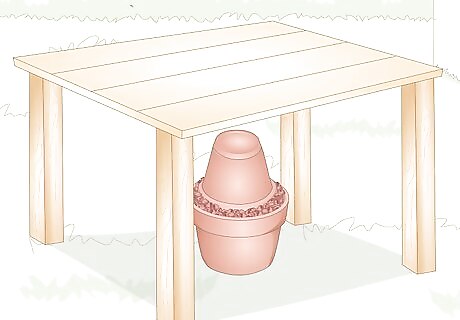
Store your Tandoor oven in a covered outdoor area. Clay pots are fairly sturdy, and they can withstand some slight weathering. Keep your Tandoor oven outside underneath a shelter that will shield it from the worst of the rain or snow. If you live in a mild climate, you can keep your oven uncovered. You can also store your Tandoor oven inside of a shed.




















Comments
0 comment